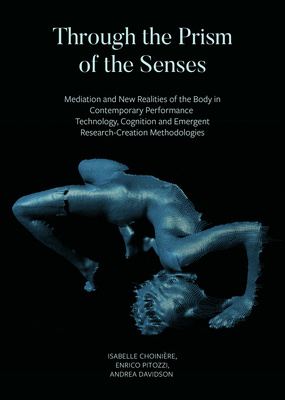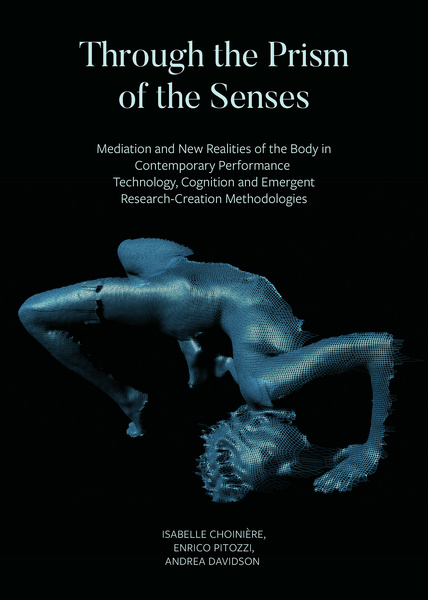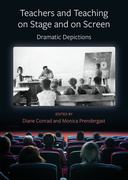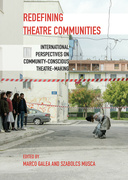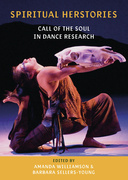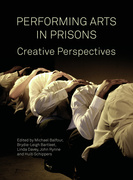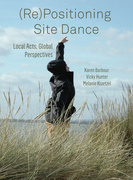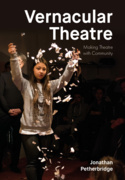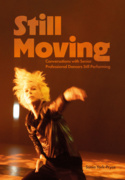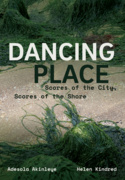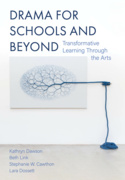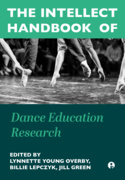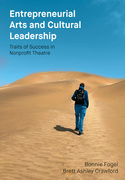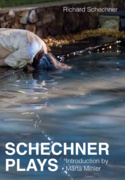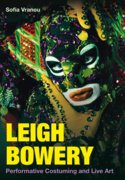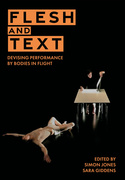Through the Prism of the Senses (Book)
Mediation and New Realities of the Body in Contemporary Performance. Technology, Cognition and Emergent Research-Creation Methodologies
This book is a vital contribution to discussions surrounding research creation and the body in relation to digital media, highlighting the ways in which new technologies confront the sensate, somatic body.
Edition
Over the past decades, a fundamental epistemological shift has transformed notions of performativity and representation in the arts under the influence of new technologies. Mediation has challenged both spectators’ and performers’ conventions of corporeality, embodiment, cognition and perception. Centring on contemporary synaesthetic and multimodal works, Through the Prism of the Senses examines new theory and practice in body-based arts and contemporary performance. Three main chapters present three distinct strands of methodological enquiry, one from each author, creating a work that resonates with artistic and philosophical enquiry. This book is a vital contribution to discussions surrounding research creation and the body in relation to digital media, highlighting the ways in which new technologies confront the sensate, somatic body.
A French-language version is to be published by Presses de l'Université du Québec (ISBN 978-2-76055-148-0). This includes additional chapters in English by Erin Manning, David Howes, and Luc Vanier and Elizabeth Johnson. A Spanish-language version is to be published by Centro Editoral Universidad de Caldas.
Isabelle Choinière is an international artist, researcher, author, and teacher of contemporary performative practices which integrate new technology. She is affiliate professor and a postdoctoral transdisciplinary researcher at Université du Québec à Montréal.
Enrico Pitozzi is a professor in the Department of Arts at the Università di Bologna.
Andrea Davidson is an award-winning videographer and new media artist. She is a senior lecturer at the University of Chichester, UK.
Introduction
Chapter 1: The prism of perception. Corporeality between intermedial stages and environments – Enrico Pitozzi
Chapter 2: Seismographies of mediated bodies. A logic of creation – Isabelle Choinière
Chapter 3: The Mediated/Mediating Body – Andrea Davidson
Conclusion
Postface – Derrick de Kerckhove
'For some time now, issues surrounding the body and its relationship to digital technologies have been debated and a myriad of interpretations have been published. Through the Prism of the Senses is a fresh look at the situation and is a welcome addition to the analysis of the body in mediation, and for the potential of advancing new realities in contemporary performance. [...] The book is theoretically rich and varied and would be a useful addition for anyone wishing to gain a wide-ranging overview of many of the key philosophical and theoretical threads within the field, as well as learning about alternative perspectives to the Western canon of thought. [...] This book will benefit art students and humanities scholars with an interest in the contention that work of this nature is dependent on our sensorial encounters with technology. Their conviction that embodied experience and corporeality is the prism through which we can gain a greater understanding of bodies and technologies, is significant. For too long the body and technology have been discussed in opposition – this book seeks to redress this imbalance and sends a strong message to the field.'
'This is a monumental work. It has multiple authors, but they are all on the same wavelength, and there are multiple allusions to each others chapters, and the key concepts they share and seek to elaborate, throughout. Consequently, there is a very high degree of cohesion and coherence to this work. It reads like a choir sings. I enjoyed the harmonies and resonances very much. This is not just another edited collection. This work is a testimony to the power of collective – or if you prefer – distributed scholarship, which is otherwise sorely lacking in today’s academy.
There is a growing literature on research-creation in the domain of new media art. This work represents a major contribution to that literature. What is more, it brings the moving body into the discussion. [...] This manuscript raises the conversation to a new level, and in so doing it breaks numerous barriers, particularly through what it has to say about the integration of the arts. This work is bound to have many repercussions not only in the arts, but in sound studies, sensory studies, body studies, communication studies and HCI as well.'
'This is a totally fascinating publication. It is human behaviour that informs the forward edge of art, and it is the technologies of process and system which now inform human behaviour. Seen through the prism of outstanding creative practitioners and theorists, led by Isabelle Choinière, this ground-breaking book shows how performative art, embodying the extended consciousness of telematic systems, can lead the way into the emergence of an entirely new aesthetic canon. The move is from interaction to absorption, from multimedia to moistmedia, a kind of cybersomatic artistic transformation.'
'Through the Prism of the Senses provides an exhilarating, provocative reflection that challenges a traditional lexicon and mode of reasoning. Choinière, Pitozzi and Davidson each have a voice of their own. The argumentative structure of the book is carefully crafted so the reader is able to move easily from one perspective to the other and navigate between the key concepts. This exploration of our complex corporeality is not a scientistic daydream, but a thoughtful manifesto fostering dialogue between philosophy, art, technology and science. It involves collaborative and collective research, artistic creative process and theory building. The book not only offers a comprehensive view on the debate amongst critics and art theorists, but also opens up innovative paths for research-creation.
And here’s the good news: the body is not obsolete. The body is significant, expressive, fluid, evolutive, transformational, relational. And technology is just another part of the learning and living, ever-changing human environment. What does it mean for the body to be at once here in flesh and bones, and elsewhere, virtualized through its mediated extensions? Perception, sensory experience and communication are not separated from technology, they are rather seen as interdependent, mutually influential. A whole new reality is thus put forward, letting previously hidden, neglected or unnoticed layers of experience to be heard; transforming the performer’s and the spectator’s "sensory maps", stimulating imagination and creativity. We are immersed in a logic of flux and metamorphosis. In the end, the body/technology prism entails an enhancement of awareness.'
'This book makes a very strong argument for the concept of an extended body that emerges through a rigorous and dedicated engagement with new digital technologies. A key claim is that our senses are "prisms" that function as "detectors" for sensations that are then "translated" into behaviours. Technology, then, increases the range of sensations we can have, and thus our perceptive and behavioural capacities are substantially enhanced. The strength of the arguments and hence the book itself, lies in the different approaches the three authors take, and the manner in which their ideas intersect throughout. In short, the structure of the document reminds us that it is crucial in our search for new knowledge that we must integrate different perspectives in a transdisciplinary manner in order to address the dilemmas we face in an increasingly complex contemporary world.
As a case in point, the writing often gets very scientific, drawing on fields of knowledge from theatre, music and dance, i.e., the traditional performing arts, to biotechnology, nanotechnology, and ideas from quantum theory and philosophy, i.e., the hard sciences and philosophy. They also draw on embedded ideas from Asian, African and North American to Latin American, Brazilian and Mexican cultures; at the same time acknowledging a heavily influenced Western European context. This kind of transdisciplinary and culturally influenced approach is difficult to integrate, especially by a group of writers coming from typically white North American and European backgrounds. However, the expertise here is undoubtable and the different ontological perspectives they are dealing with taken very seriously. In short, the writers make an immense effort to understand the different perspectives of body and corporeality – and inter-corporeality – that exists within these cultures that are not normally within their own accustomed spheres of experience.
At the same time, one also gets the sense that the writing does sound a bit idealistic about its goal to cross-pollinate ideas from western thought with those from "ancient philosophical traditions from Asia, the Far East, Africa, Brazil and Haiti". One is reminded of the development of many Western art forms that literally appropriated from these cultural traditions without paying due respect to their depth, while the work of many of those striving to emerge from their specific "colonialist" circumstances were given short shrift. It is all fine to imagine a situation where one can have access to certain technologies that allows one to experiment with them as "forms of thought or thought processes", and to understand how "technology can extend and renew perception [...] while also nourishing artistic expression", but few of these artists have access to such luxuries. In the absence of these technologies, however, many of them rely on traditional technological sources and practices at their disposal, practices that I argue can be equally productive as "forms of thought or thought processes".
But I diverge a bit. There is immense scholarship in artistic research at work in this document, and the dedication of the three authors to identifying the potentials of the body, to our perceptive capacities, and to our developing relationships with technological innovation is inspiring. I am certain that its publication will be greeted by those working in a number of fields from dance and somatic practices to philosophy, and from computer science and engineering to biotechnology and the neurosciences with enthusiasm, as I have.'
'This is a hugely important treatise, and I use that term intentionally. It is more than “just” a book. It makes an extensive argument in an area of research-and-practice still undergoing rapid change. It sets out the foundations for a new way of thinking about, and working with, technology in relation to the performative body. It is also a goldmine of ideas and clues for rethinking performative practices. I expect to use it in substantive ways in my own work over the coming years, as well as to recommend it to students and other artist-practitioners.
[...]
The Introduction itself is groundbreaking, or perhaps it lays out the groundbreaking concepts presented in the rest of the book, clearly and cogently. For example, it focuses on processes that “reveal previously unknown, hidden or unusual aspects of the body and, at the same time, reflect a different vision of ourselves and the functioning of our imagination...” This constitutes “an ontological shift away from former worldviews anchored in a culture of knowledge based on representation, to rather evolve towards a world of “machine-based modes of worldmaking”, and insists that “technologies are not simply means (an instrumental perspective). They constitute an environment, a logic and thought processes (a constitutive perspective).” Hence we are moving from the McLuhan/Shannon-Weaver idea of communication as passing through a medium, into something much more proactive and “entangled”.This is also a field-based understanding of embodiment, that is, “implicit perceptual faculties which can modify our fields of experience and therein, endow them with a quality of sensible evidence”, although the authors claim it is “network-based”, I think because they view it as constituted by interconnected nodes: “The term “corporeality” (corporéité), with more plastic connotations, intends to communicate a changing, mobile and unstable reality, made up of networks of intensities and forces.” (Although they claim networks, I am inclined to believe they are talking about what Tim Ingold calls “meshes” as distinct from “networks” - in meshes, the directionality of the links matter. See his Being Alive. For example, Pitozzi talks about the need to reintegrate the observer into the understanding of performance, but this is an example where the direction of the action matters.)
[...]
In summary, this book constitutes a significant consolidation of emerging ideas at the forefront of work on the understanding and practice of art, especially immersive and performative art. It is going to be a “must” read for anyone working in this area for decades to come. Moreover, I liked it, at least in part because it resists any kind of rapid assimilation of its ideas, for all the right reasons. This work straddles the traditional divide between art and technology, but also it extends feelers into methodological domains that combine art and science. For this work, not only are new theoretical approaches required, but new analytical and evaluative methods as well. As the authors note, “One of the particularities of the immersive environment is thus that it only makes sense – and can only be measured successful – with the spectator’s involvement in and experience of the work.” This book makes a cogent argument for the development of such new modalities of understanding.'
'This book fills a huge methodological void. It will undoubtedly become the bedside book for performing arts researcher and graduate students. In particular, for those wishing to highlight their research based on their artistic performance in an academic and collaborative framework.
In addition to this brilliant approach, this book is also theoretically revolutionary on several levels. It brings new perspectives not only for the performing arts, but also for theology, technology, cognition, etc. Far from being based on a fully technological approach, this book nuances its impact, integrates it and presents a very humanist and pragmatic ways of considering artistic performance into an academic research.
On many levels this book represents many daring risk-taking on the part of its authors. Nevertheless, empirical or meta-analytical approaches could have supplemented their presentations in order to establish a broader demonstrative base. However, the measuring instruments, the evaluation standards and the apprehension tools used for these types of analysis, could not yet properly be used in this context. Expectations for these types of “tools” will certainly be growing as the book opened and set a clear path for performing arts field. In any case, this book underlines an extraordinary contribution. Every research-creation student should read it.'
'Passing through and through the senses has become with this work a methodology that renews the relationship of art to the living body. If the performance could only have externalized the vivacity of the artist's body in a transgressive vitality, there was still to explore, less the margin or the surface of the bodies, than what emerges from the inside.
The book is part of the deepening of the bodies that are developing today through the new esthesiology of the immersive arts. The synthesis here is oriented towards a solution that is less hybrid than mediating: the technologies here activate the living by an inter-sensoriality because the tactibility would be both intimate and vibrant.
By avoiding the confusion of the senses, the different contributions inscribe the performativity of the living in its awakening: acuity in intimate mobilizations, somatechnics of the devices, perceptual-sensory seismographies ... everything would like to scan the body lived in the mobility of the living. The difference in degrees in the complementarity of the senses will thus allow the reader to perceive this globality.
After phenomenology, what philosophy of the living body, such as one of the innovative proposals which comes to renew the Diderot of the letter on the blind for the use of those who see, in a sensory materialism and which puts us on the spot.'
'This is an ambitious work in which the authors take on the subject of how digital technologies have, and continue to, change us through the extension of our senses that in turn modifies and redefines our perceptions [...] The book presents a deep level of scholarship and philosophical enquiry [...] The level of intellectual enquiry is the manuscript's strongest aspect, and its original focus on embodied perception, emergence, the body, and the transforming nature/power of technology.'

